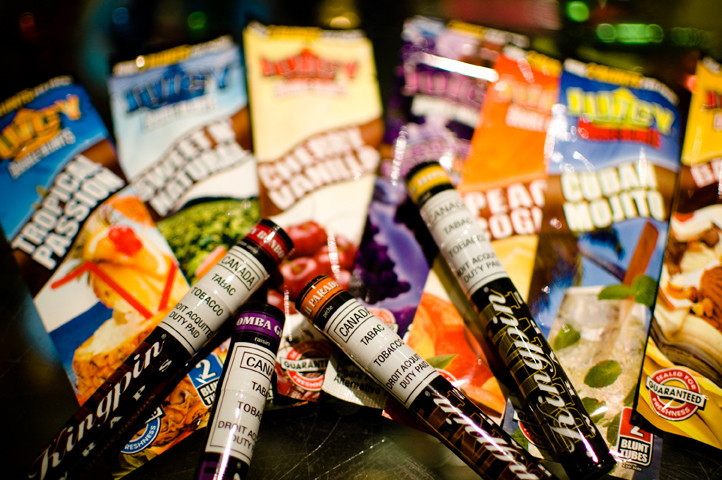Flavoured tobacco ban may not be the end
Legislation could be expanded to cover menthol cigarettes, sheesha
The federal government recently passed Bill C-32, a move to ban flavoured tobacco products they believe are increasing smoking rates among youth. But as anti-tobacco advocates lobby for stricter smoking laws, many are wondering what’s next on the agenda.
“The tobacco industry is very resilient,” said Joe Larsen, an employee at Urban Bakery, a Winnipeg store that will be affected by the ban.
The bill bans candy and fruit-flavoured cigarettes, little cigars or cigarillos and blunt wraps. Blunt wraps are cigar rolling papers made of homogenized tobacco that burn slowly and often include flavour additives.
Some claim that an outright ban on these products doesn’t signify the end of flavour additives for tobacco.
“Even though there will be no flavoured blunt wraps [or little cigars] there will still be ways to flavour your tobacco,” said Larsen. “There are flavour drops and glue on the market.”
Many of these products can be bought online, he said.
Tasty Puff, an American company, boasts their ability to supplement flavoured papers and blunt wraps with 25 liquid flavours. The user drops the liquid on to the paper or tobacco, changing it into a strawberry or piña colada-flavoured cigarette.
“If these products become specifically designed by tobacco companies, that’s something that no one saw coming,” said Judy Wasylycia-Leis, a Winnipeg MP who tabled the bill.
Lobbyists believe the fact these products were ever manufactured and marketed is a testament to the cunning of the tobacco industry.
“Ten years ago this market category [flavoured tobacco] simply didn’t exist,” said Rob Cunningham, senior policy analyst for the Canadian Cancer Society. “[The category] is due to the market creativity of the tobacco industry and these products have now taken off.”
Bill C-32 does not include sheesha (flavoured tobacco smoked out of a hookah water pipe), flavoured rolling papers and menthol cigarettes.
C-32 may be expanded to include menthol cigarettes, which represent only two per cent of the Canadian tobacco market. It may also come to include flavoured sheesha or other flavoured products at some point down the line.
“We will revisit the use of menthol cigarettes among younger age groups and update the legislation if needed,” said Wasylycia-Leis, who wanted to include menthol in the original bill but was met by opposition from Conservatives and Liberals.
Wasylycia-Leis maintains that C-32 has limitations but is a big step forward.
According to unit sales released by Health Canada, the prevalence of little cigars, or cigarillos, has increased substantially in the last eight years. In 2001, unit sales were reported at 53 million. By 2008, that number had reached 469 million. Additionally, the Canadian Tobacco Use Monitoring Survey conducted in 2008 found that 49 per cent of youth ages 18 to 24 had reported smoking a little cigar at least once, with 13 per cent admitting to smoking them at some point in the last month.
For information on Manitoba’s “lax” tobacco regulations, visit Ethan Cabel’s blog at www.uniter.ca/blogs.







